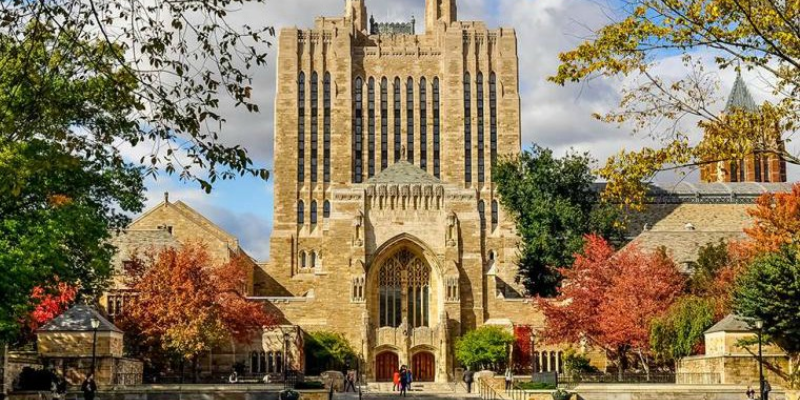To those of us who have lived and worked there, it is simply “the Kingdom”. On first arrival, the experience can be unsettling. There are so many clichés about Saudi Arabia that to find an actual place, inhabited by human beings with recognizably human feelings, can almost be a shock. The real question, then, is why the country has been so dehumanized by westerners. The reason, of course, is ignorance, animated by a prejudice of which many in the West are guilty, and that resists easy definition: racism, romanticism, orientalism, but also something more explicitly ideological in nature, a suspicion of anywhere whose politics and culture are illiberal and authoritarian, as Saudi Arabia’s undoubtedly are; and, taking that a step further, an especial contempt felt towards such places when they are part of the western global order. Such prejudice is vital to overcome, because Saudi Arabia matters. We have seen this once again over the past few weeks, with the country mediating between Russia and the US over Ukraine.
David Commins’s new book, Saudi Arabia: A modern history, has been eagerly anticipated. A professor of history at Dickinson College in Pennsylvania, the highly unprejudiced author wrote the definitive history in English of the Wahhabi Mission (The Wahhabi Mission and Saudi Arabia, 2006) as well as The Gulf States: A modern history (2012), and translated an insider account of the takeover in 1979 by a millenarian group of the Grand Mosque in Mecca (The Mecca Uprising by Nasir al-Huzaimi, 2021). Commins begins his story before the rise of the First Saudi State in the mid-eighteenth century and takes us up to the near-present. The whole tale is grounded in an outstanding grasp of that early period and the intricate nexus of tribal, geopolitical and religious-cum-ideological power dynamics that catapulted the House of Saud to regional prominence. Geographically, Arabia always lay on the margins, especially for non-Muslims, but the rise of puritanical Wahhabism added a new isolationist impulse, counterbalanced by an explosive strain of expansionist jihad thanks to the alliance between the founder of the Mission, Sheikh Muhammad ibn Abd al-Wahhab (1703–92), and the founder of the House of Saud, Emir Muhammad bin Saud (1687–1785).
Commins has read all the sources and thus, far from levelling the usual oversimplified denunciations of the Wahhabi Mission (which did include episodes of horrendous sectarian brutality and cultural philistinism), places Wahhabism in its proper context, showing how and why it deviated from traditional Sunni theology, and always linking its progress to the exigencies of building, for the first time in more than a millennium, a trans-tribal pan-Arabian state.
The Second Saudi State of the mid-nineteenth century is even less well known than the first, and characterized by a high degree of complex royal in-fighting. With lucidity and concision, Commins explains how its rise, collapse and resurrection in the early twentieth century were bound up with the geopolitics of the era, not least British imperial policy. The man who carried out that resurrection, bringing life to the so-called Third Saudi State – which continues to this day – was King Abdul Aziz, better known to westerners as Ibn Saud (1875–1953). The author traces the twists and turns of Ibn Saud’s foreign and domestic policy, outlining deftly the competing interests the king was forced to reckon with, neutralize, co-opt and destroy.
As his story unfolds, Commins takes in the discovery of oil, the pact with the US and the twin postwar challenges of pan-Arab nationalism and international communism, along with domestic calls for labour reform and economic, social and cultural development; then the period marked by the Arab oil embargo, the resulting oil price boom, the government’s reaction to the Islamic Revolution in Iran, the various shifts in policy towards Islamists and Shia Muslims, the largely cosmetic political reforms in response to ever-increasing demands for change, including during the Arab Spring, and finally the arrival on the scene of the young crown prince Mohammed bin Salman, or MBS, with his transformative vision for the future. Economically, MBS’s reforms aim to diversify Saudi Arabia away from oil; socially, he has relaxed the strict rules on gender segregation and expanded the scope for women to participate in the country’s social and economic life; politically, these reforms have entailed a greater centralization of state power, an almost total restriction on political activism and a draconian increase in the policing of critical speech, especially online.
The story isn’t all political or economic. Commins writes sympathetically about the fate of Arabia’s Bedouin population, well aware that the pacification of the nomads is close to the heart of the story. For millennia, the Bedouin were the lifeblood of Arabia, but the arrival of the modern bureaucratic state forced them into villages and towns, while industrial production (not least in livestock management) undermined their economy, a transformation to the social fabric of Arabia that casts a long and mournful shadow. Commins also has a clear knowledge of Arabian poetry and modern Saudi literature, from the Nabati verse of the tribal warriors to the establishment of the first newspapers in the Hejaz and the appearance of the modern novel. My only complaint about this sober, erudite and admirably concise study is a slight imbalance in favour of political and cultural forces at the expense of the flesh-and-blood men (and it was almost always men) who slashed, drilled and gambled their way across the Saudi century. Those who don’t know better might leave it assuming that nothing especially lurid or corrupt has ever occurred behind the scenes of Saudi history.
Malise Ruthven’s Unholy Kingdom: Religion, corruption and violence in Saudi Arabia looks set to fill that hole. Unfortunately, it contains little else but spice. The book started life as an essay in the London Review of Books (September 7, 2017). Someone thought that piece should be expanded, and initially it was, in French, as L’Arabie des Saoud (2019). Six years later, it appears in English. This reversioning is frequently sloppy; some material has been updated, but much of it reads as if we are still in 2019, and the effect is disorientating, not least because the whole book is mired in the kind of contemptuous liberal-leftist attitudes that have tended to obscure western understanding of the country.
The unconscionable murder of Jamal Khashoggi in October 2018 bookends the narrative, a preposterous framing device that purports to typify the country, its history and politics. The crime becomes the prism through which everything is seen, especially the crown prince. Some, including the CIA, have pinned the murder on MBS, which, of course, the Saudi government denies. The full truth is not known, but that does not stop Ruthven from characterizing MBS as a narcissistic psychopath who relishes torture and displays pieces of Khashoggi’s body on his yacht.
This sort of silliness infects the entire book. It is not clear how much time Ruthven has actually spent in Saudi Arabia, and there is little sign that he has spoken to insiders. The bibliography is sub-par and there are many factual errors. The perpetrators of the Khobar Towers bombings of 1996 were in fact Saudi Shia militants with links to Iran, not al-Qaeda. The Muhaya attack carried out by al-Qaeda suicide bombers in November 2003 did not involve a gunfight with security services and was not facilitated by the National Guard. Ruthven rightly points out that Yusuf al-Uyairi condemned Saudi sheikhs who publicly supported the government’s counterterrorism campaign against al-Qaeda; he is sympathetic to Uyairi’s anti-government position, but fails to mention that Uyairi was the leader of al-Qaeda in Saudi Arabia. Does he not know this, or does he not care? There was no plot hatched by MBS to overthrow his father, King Salman, in March 2019. The Muslim Brotherhood does not simply “look for a democratic transformation framed by Islamic law” – an absurd summation of the group’s aims. Hamas is a branch of the Muslim Brotherhood. Apparently, unlike Saudi Arabia and the UAE, Qatar “prefers not to use military force to resolve disputes”. Tell that to the Islamist militias that Qatar has been supporting, logistically and financially, since the outbreak of the Arab Spring. Elsewhere, Ruthven inclines heavily towards the extremely tenuous idea that the former Saudi ambassador to Washington, Prince Bandar bin Sultan, carries significant blame for everything from the invasion of Iraq in 2003 to the Syrian civil war, with 9/11 thrown in as well.
This is a shame, because there is much that is unpleasant, corrupt and violent in Saudi history, which can tell us much about the Kingdom and its role in the world. But this book is not fair. Rather, it seems designed to assert an ideologically committed anti-Saudi position, positing the Kingdom as worse than Qatar and Iran, and Wahhabism as responsible for the worst excesses of radical Islam. Malise Ruthven’s characterization of the Hamas attack of October 7, 2023, which appears towards the end, leaves us in little doubt as to how he sees the world. The author dedicates not a single sentence to a description of the pogrom itself, but instead makes sure to note the “paranoia and dysfunctional command” that the Israel Defence Forces showed in alleged cases of Israelis killed by friendly fire. Readers looking for an objective, factual account of Saudi history should avoid this book.
Thomas Small is a documentary film-maker, the co-author of Path of Blood: The story of Al Qaeda’s war on the House of Saud, 2014, and co-host of the podcast Conflicted. His Substack is Life Sentences
The post Riddle of the sands appeared first on TLS.

 By Times Literary Supplement | Created at 2025-03-26 14:07:28 | Updated at 2025-04-03 09:36:47
1 week ago
By Times Literary Supplement | Created at 2025-03-26 14:07:28 | Updated at 2025-04-03 09:36:47
1 week ago






